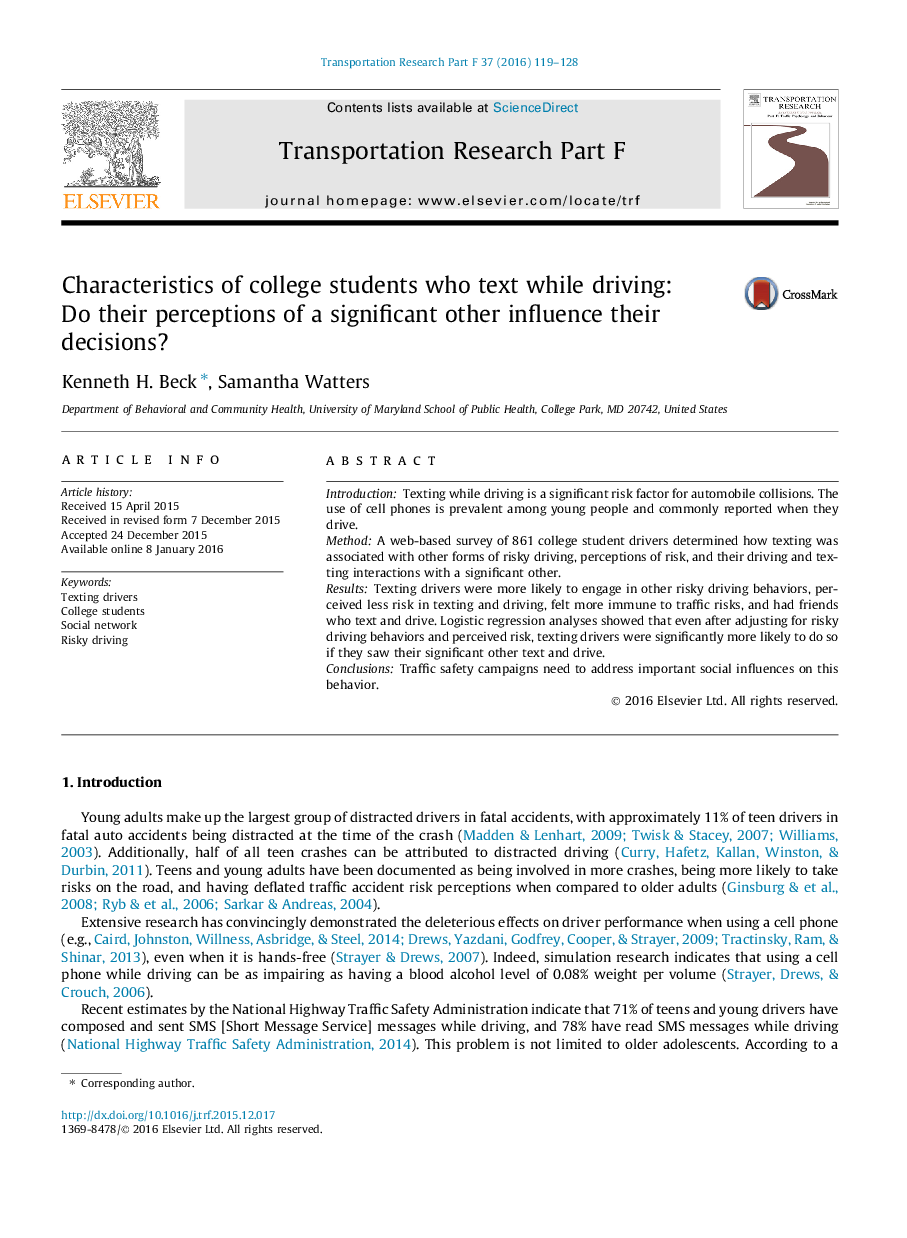| کد مقاله | کد نشریه | سال انتشار | مقاله انگلیسی | نسخه تمام متن |
|---|---|---|---|---|
| 897640 | 1472446 | 2016 | 10 صفحه PDF | دانلود رایگان |
• A survey of college students revealed that 52% reported texting while driving at least once in the past month.
• Texting drivers were more likely to engage in a variety of other risky driving behaviors.
• Texting drivers felt more immune to traffic risk, and were more likely to friends who text and drive.
• Texting drivers were more likely to text and drive if they saw their significant other do so.
• Traffic campaigns to prevent texting and driving need to address important normative and social influences.
IntroductionTexting while driving is a significant risk factor for automobile collisions. The use of cell phones is prevalent among young people and commonly reported when they drive.MethodA web-based survey of 861 college student drivers determined how texting was associated with other forms of risky driving, perceptions of risk, and their driving and texting interactions with a significant other.ResultsTexting drivers were more likely to engage in other risky driving behaviors, perceived less risk in texting and driving, felt more immune to traffic risks, and had friends who text and drive. Logistic regression analyses showed that even after adjusting for risky driving behaviors and perceived risk, texting drivers were significantly more likely to do so if they saw their significant other text and drive.ConclusionsTraffic safety campaigns need to address important social influences on this behavior.
Journal: Transportation Research Part F: Traffic Psychology and Behaviour - Volume 37, February 2016, Pages 119–128
